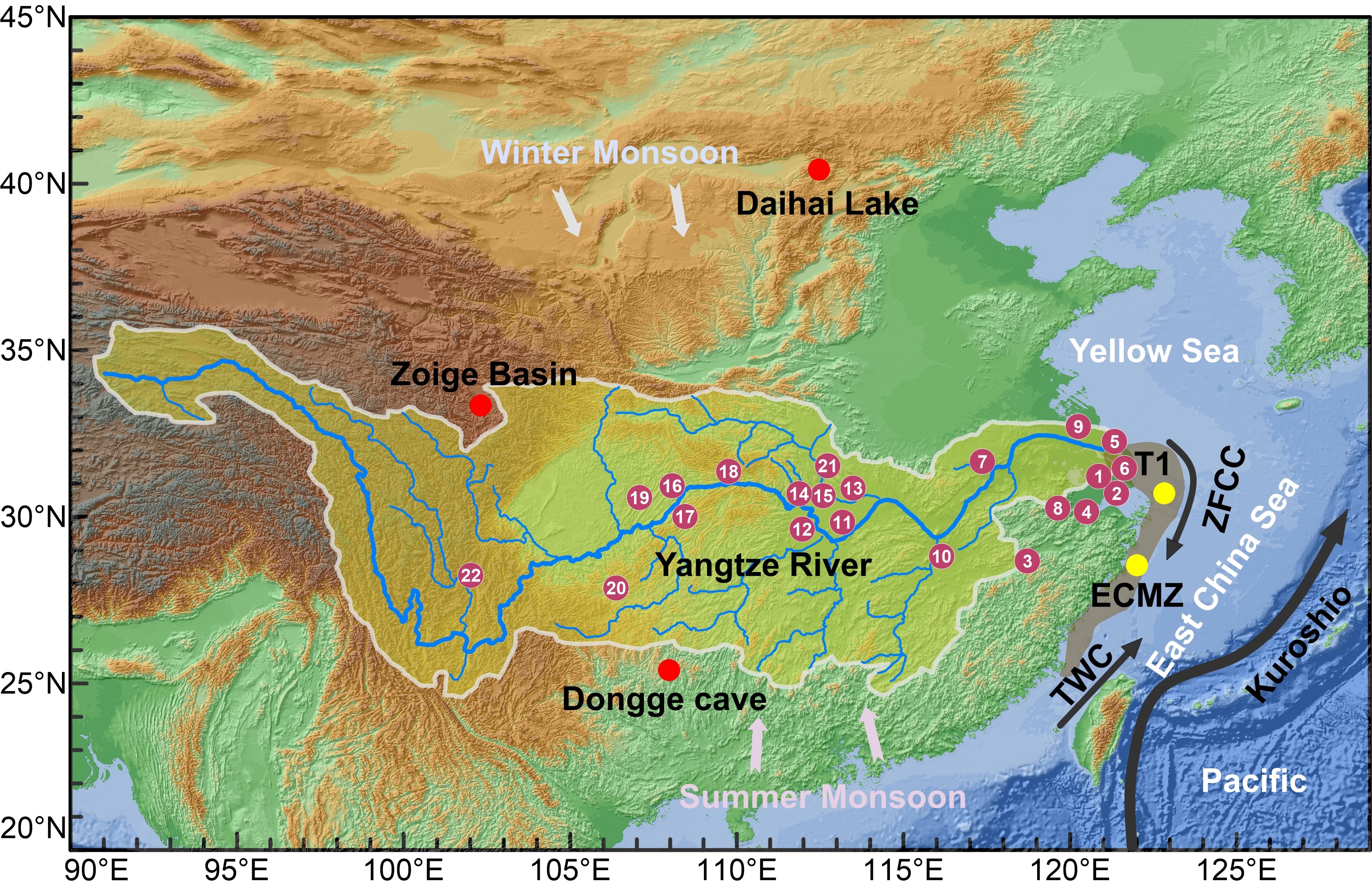
As an important earth system process, fire is linked with climate, vegetation and human. However, the interaction among these processes, especially human impacts on fire, is still poorly known for lacking of fire history record at regional scales.
Prof. WAN Shiming and his Phd student PEI Wenqiang from the Institute of Oceanology of the Chinese Academy of Sciences (IOCAS), in cooperation with their collaborators, presented a continuous and high-resolution black carbon record of fire history of the Yangtze River Basin covering the last ~7 ka. Their findings were published in Quaternary Science Reviews.
As one of the major culture cradles of ancient China, the Yangtze River Basin is ideal for assessing the broad-scale response of fire to combined impacts of natural factors and human activity. The continental shelf of the East China Sea received huge volumes of sediment from the Yangtze River, thus potentially a good archive for reconstructing the fire history of the Yangtze River Basin. Black carbon is a product of incomplete combustion of vegetation and fossil fuels and has been used as an effective proxy of fire activity.
The researchers found that changes in fire activity at 7.0 - 3.0 ka BP on both millennial- and centennial-timescales were closely related to variations in temperature and precipitation, with more fire during warm and humid periods, suggesting climatic control on regional fire activities.
In contrast, the significant decoupling between fire and climate on multi-timescales since ~3.0 ka BP implies increasing anthropogenic impact on regional fire activity. On millennial-timescale, long-term reduction in regional fire activity since ~3.0 ka BP was caused by a general decrease in forest cover in Yangtze River basin with increasing human activity.
However, the short-term (centennial-timescale) enhancement in biomass burning (6 episodes of high fire activity) since ~3.0 ka BP usually coincides with colder and drier periods characterized by increasing human activity associated with large-scale population migrations from Northern China (the Yellow River Basin) to Southern China (the Yangtze River Basin).
This study highlights that human disturbance can modify the pre-existing relationship between fire and climate change.

Fig. 1. A schematic map showing the Yangtze River Basin, the East China Sea and the studied sites. (Image by IOCAS)

86-10-68597521 (day)
86-10-68597289 (night)

52 Sanlihe Rd., Xicheng District,
Beijing, China (100864)

